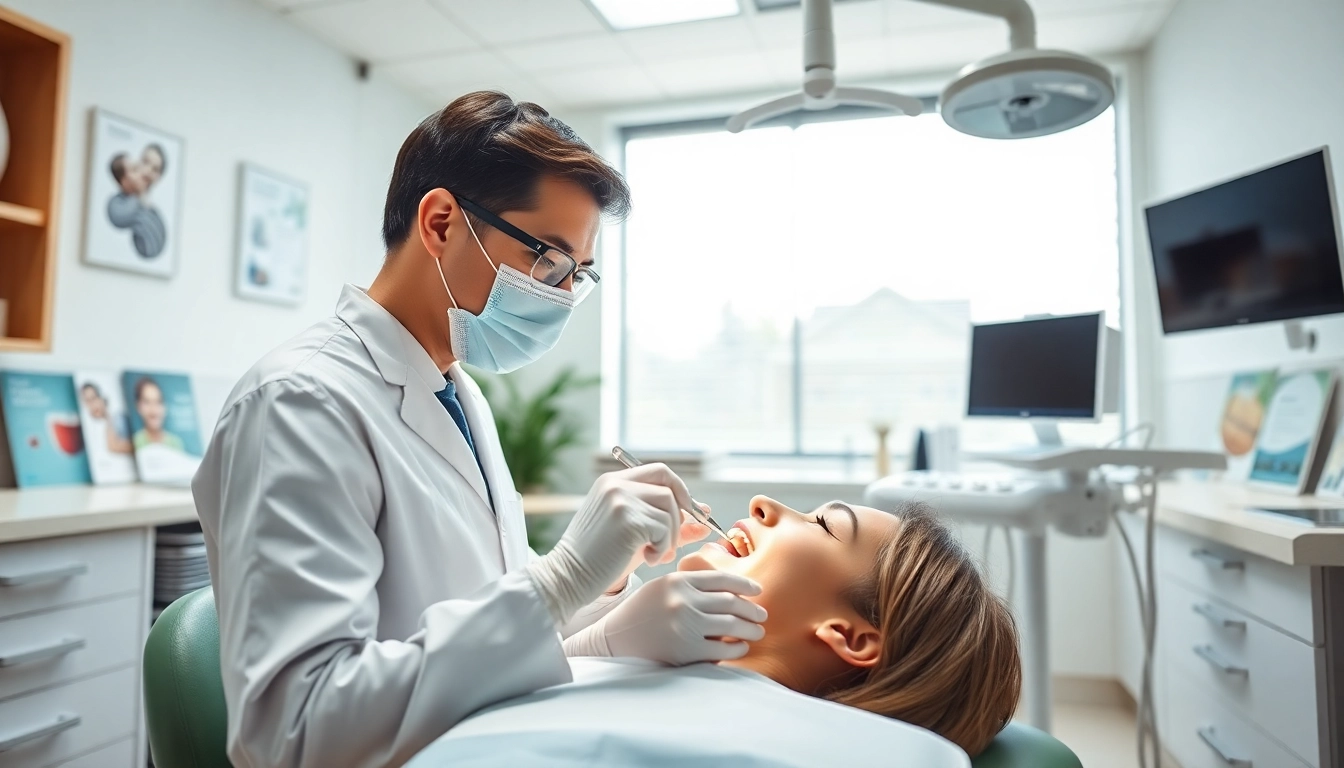Understanding Dental Cleanings
Dental cleanings are a crucial aspect of maintaining optimal oral health. They involve the professional cleaning of teeth, which is aimed at removing plaque, tartar, and other harmful substances that accumulate over time. The process is typically carried out by trained dental hygienists, who utilize specialized tools and techniques to ensure that teeth and gums remain healthy. Regular dental cleanings, recommended at least twice a year, not only lead to better oral hygiene but also play a significant role in preventing serious dental conditions. For more detailed information on dental cleanings, read on.
What Are Dental Cleanings?
Dental cleanings refer to the systematic process of cleaning the teeth by a licensed dental professional. The aim is to eliminate dental plaque, tartar, and bacteria that can lead to tooth decay and gum disease. The procedure typically includes a thorough examination of the mouth, teeth, and gums, followed by several specific cleaning methods.
During a standard dental cleaning, instruments designed for scaling and polishing are used. These tools allow dental professionals to clean hard-to-reach areas where regular brushing and flossing might not be effective. A professional cleaning usually lasts about 30 to 60 minutes, depending on the condition of the patient’s teeth and gums.
The Importance of Regular Dental Cleanings
Regular dental cleanings are fundamental to maintaining good oral health for several reasons:
- Prevention of Gum Disease: Plaque and tartar buildup can lead to gingivitis and, if untreated, more severe forms of gum disease. Dental cleanings help prevent these conditions.
- Early Detection of Dental Issues: Professional cleanings often include a thorough examination of the mouth, allowing for early detection of cavities or other problems.
- Fresh Breath: Routine cleanings can significantly help with bad breath, as they reduce the amount of bacteria in the mouth.
- Long-term Cost Savings: By preventing small issues from turning into major problems, regular cleanings can save patients significant costs on extensive dental procedures.
Who Should Get Dental Cleanings?
Generally, everyone should receive regular dental cleanings. Specific groups may require more frequent visits, including:
- Children: Starting from the age of one, children should have their first dental visit, and regular cleanings should commence around the age of three.
- Pregnant Women: Hormonal changes can increase the risk of gum disease; thus, pregnant women should maintain more frequent dental visits.
- People with Existing Dental Issues: Those with a history of gum disease, multiple cavities, or other oral health concerns may need more frequent dental cleanings.
Types of Dental Cleanings
Standard Dental Cleanings
Standard dental cleanings, often referred to as prophylaxis, are conducted to thoroughly clean teeth that appear healthy without significant gum disease present. During these cleanings, dental hygienists perform the following steps:
- Physical Examination: The dental hygienist will begin by checking the mouth for signs of issues such as inflammation or decay.
- Scaling: Using hand tools or ultrasonic devices, the hygienist will remove plaque and tartar from tooth surfaces.
- Polishing: A gritty toothpaste is used to polish the teeth, making the surfaces smoother and less likely to harbor plaque.
- Flossing: Flossing is performed to remove any remaining particles from between the teeth.
- Fluoride Treatment: Often, a fluoride treatment is applied at the end to strengthen the enamel.
Deep Cleanings for Gum Health
Deep cleanings, also known as scaling and root planing, are more intensive than standard cleanings and are recommended for patients with gum disease or serious tartar buildup. This process involves:
- Scaling of Roots: In addition to the regular cleaning, deep cleanings involve scaling below the gum line to remove toxins and bacteria from the root surfaces.
- Root Planing: This involves smoothing rough areas of the tooth roots to help the gums reattach more effectively and prevent future infection.
Deep cleanings may require more than one visit and often include additional follow-up visits to monitor gum health and healing.
Specialized Cleanings for Specific Conditions
Certain conditions may require specialized dental cleaning techniques. These may include:
- Pediatric Cleanings: Tailored approaches for children that make the experience positive and educational.
- Periodontal Cleanings: Targeted cleanings for patients with periodontitis that involve periodic maintenance cleanings.
- Patients with Heart Conditions: Individuals with heart conditions may need to take antibiotics before cleanings to prevent endocarditis.
The Dental Cleaning Process
Initial Examination and Diagnosis
The dental cleaning process begins with an initial examination. The dentist or hygienist carefully evaluates the patient’s mouth for signs of cavities, gum disease, and other dental issues. This preliminary assessment helps decide the cleaning approach and frequency for future visits.
During this phase, dental X-rays may also be taken, particularly if it’s been a while since the last visit or if the patient is experiencing symptoms that need further investigation. The results from this examination guide the subsequent cleaning procedures.
Steps Involved in a Dental Cleaning
Following the initial examination, the dental cleaning involves several structured steps:
- Removal of Plaque and Tartar: Utilizing ultrasonic scalers, which use vibrational energy to eliminate plaque and tartar painlessly.
- Cleansing: A thorough wash of the mouth is performed, sometimes including an antibacterial rinse to help reduce bacteria.
- Polishing: The teeth are polished using a soft rubber cup and polishing paste to ensure a smooth finish.
- Consultation: Discussion regarding oral hygiene habits, dietary changes, and product recommendations is conducted at the end of the appointment.
Post-Cleaning Care and Maintenance
Following a cleaning, it’s crucial for patients to take proactive steps in caring for their oral health:
- Brushing: Brush twice/day with fluoride toothpaste.
- Flossing: Daily flossing is recommended to remove food particles between the teeth that brushing may miss.
- Dietary Choices: Limit sugary foods and beverages that contribute to plaque and decay.
Patients are typically advised to return for cleanings every six months; however, frequency may vary based on individual needs.
Benefits of Regular Dental Cleanings
Preventing Gum Disease
Regular dental cleanings are integral to preventing gum disease, which affects the supporting structures of the teeth and can lead to tooth loss if untreated. By removing plaque and tartar, patients can significantly reduce their chances of developing gingivitis and periodontitis.
In turn, this not only preserves dental health but also contributes to overall systemic health. Studies have shown a link between periodontal disease and conditions such as diabetes, heart disease, and respiratory issues.
Eliminating Plaque and Tartar
While daily brushing and flossing are crucial, they may not entirely remove all plaque and tartar, especially in hard-to-reach areas. Professional cleanings are essential to thoroughly address these problem areas, leading to cleaner and healthier teeth.
Eliminating plaque lowers the risk of decay, remembering that once plaque hardens into tartar, it can only be removed through professional cleaning.
Enhancing Overall Oral Health
Routine dental cleanings lead to enhanced overall oral health. With ongoing re-evaluations of dental health at each visit, preventative strategies can be adapted and tailored to an individual’s needs. Regular dental cleanings:
- Help maintain fresh breath.
- Reduce the build-up of oral bacteria.
- Pave the way for dental treatments or other corrective measures if serious issues are detected.
Addressing Common Concerns about Dental Cleanings
Do Dental Cleanings Hurt?
One common concern regarding dental cleanings is the discomfort that some patients may feel during the process. While sensitivity may occur, particularly if a patient has existing gum disease or sensitive teeth, most individuals find that the cleaning itself is relatively painless.
Dental hygienists continually assess the comfort levels of their patients and will take breaks if any discomfort arises. For those with higher sensitivity, dentists can often provide localized anesthesia.
Cost Considerations for Dental Cleanings
The cost of dental cleanings can vary significantly based on geographic location, the dentist’s experience, and whether the procedure is standard or deep cleaning. On average, patients can expect to pay between $75 and $200 for a cleaning. It’s important to check insurance plans, as many cover routine cleanings and exams.
Discussing costs upfront with the dental office can help in planning for necessary hygiene appointments.
How Often Should You Have Dental Cleanings?
The American Dental Association recommends that adults should have a dental cleaning every six months. However, this may be adjusted based on individual oral health needs. Some individuals may need cleanings more frequently if they exhibit risk factors such as a history of gum disease, smoking, diabetes, or specific types of medication use.
Ultimately, the frequency of cleanings should be determined in consultation with your dentist, who can provide tailored advice based on your oral health and personal risks.













Leave a Reply